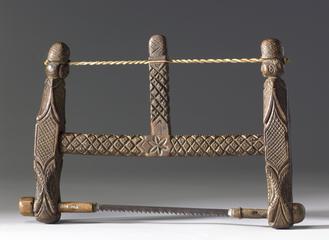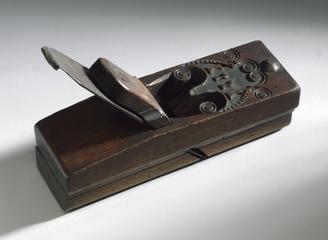Watchmaker's turn
Watchmaker's drilling turn. The turn has a lug at its base for fitting it into the jaws of a vice. One end of the fork is drilled and tapped to recieve the adjustable back centre and the other end has a plain hole through it. The spindle has a shouldered fore end fitting the hole, whilst the back centre holds the shoulder up against the bearing. The nose of the spindle is bored for the drills. It carries a pulley at the near end for the bow string to act upon.
More
A turn like this was used to hold small watch parts in place. This turn was used with a whalebone bow (1910-16/2) which rotated the part in the turn in order to shape it.












